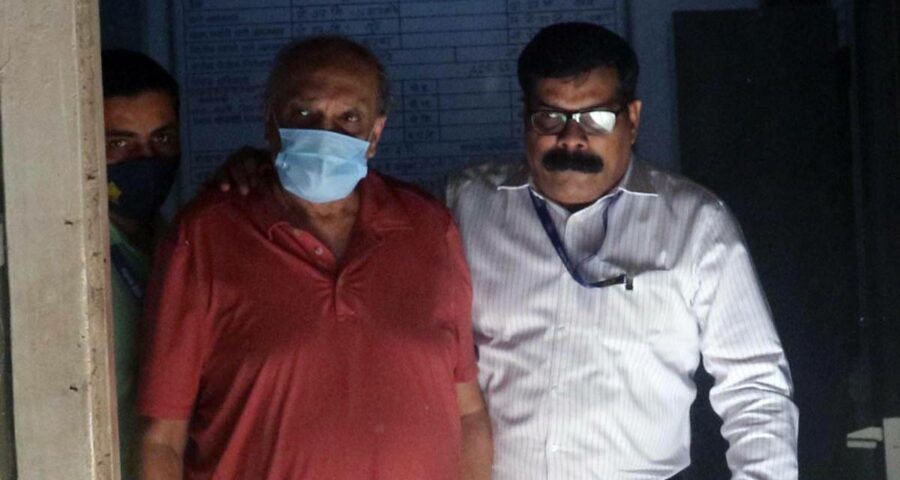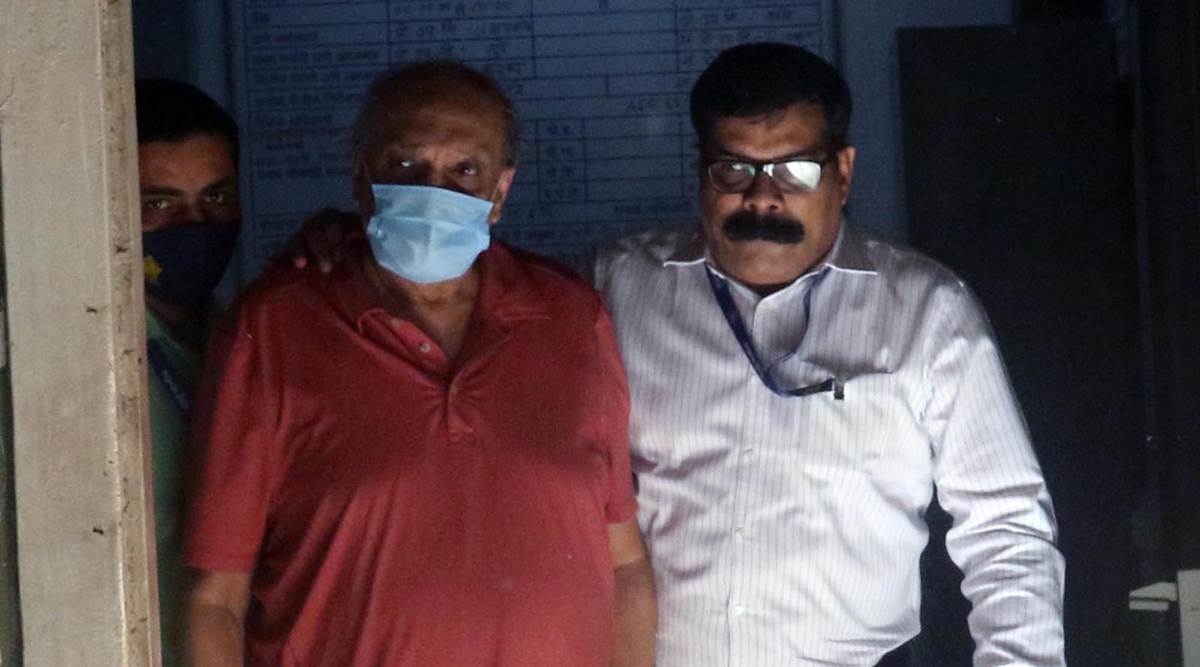Last week, Dilip Chhabria, the car designer to Bollywood stars, industry captains and the high and mighty, was produced in court by the police for remand, barefoot and dishevelled — done in by a car that was supposed to be the pinnacle of his success, DC Avanti.
As a two-year-old, he had been photographed with a garland of toy cars around his neck, a prophesy perhaps of his passion for automobiles. As a young entrepreneur in post-liberalisation India, he gave India the wheels to escape from the drab Padminis and Ambassadors. Now, the man whose initials ‘D.C.’ are synonymous with car design in India finds himself behind bars, fighting charges of financial fraud.
Last week, Dilip Chhabria, the car designer to Bollywood stars, industry captains and the high and mighty, was produced in court by the police for remand, barefoot and dishevelled — done in by a car that was supposed to be the pinnacle of his success, DC Avanti.
If Chhabria’s ambition was audacious for his times, so is the alleged scam in its simplicity. According to the police, starting two years ago, DC started fielding own employees to get loans to buy the DC Avanti (priced around Rs 42 lakh); different loans were raised against the same car by registering it with the RTO in different cities; and the vehicle eventually sold to a legitimate buyer. The fraud came to light when the owner of a DC Avanti in Tamil Nadu discovered during the course of a traffic violation that his car was also registered in Haryana.
A second FIR was registered on a complaint from television star Kapil Sharma, who accused Chhabria of cheating him of Rs 5.7 crore by not delivering a customised van he had paid for. Chhabria’s son, sister and company directors have been named as wanted accused. The police have also expanded their investigation to look into role of employees at the finance companies that extended the loans.
Chhabria’s lawyer Vagesh Mishra denies the charge of loan fraud. “The entire case is at the behest of a business partner of Chhabria’s who has also propped up the complainant in the case. Many of the allegations like dual financing are false. We are getting more details about the allegations and will soon be issuing a clarification,” he says.
However, many in Chhabria’s inner circle say the signs that the “bubble would burst” had been around as far back as 2015, when he unveiled DC Avanti, dubbed as India’s ‘first sports car’. The coupe was named after the Studebaker Avanti (Avanti in Italian means forward or onwards) in Tintin & the Land of the Black Gold, and Chabbria acknowledged the dream project as one of the biggest risks of his life.
However, was “a dream without the foundation to succeed”, says a person who has known Chhabria since the 1990s. The reviews of the car were hardly encouraging. “Looks like a Lamborghini but without its performance,” was the general verdict. “If you are going to sell a sports car for Rs 35 lakh, you are going to cut corners,” said one auto industry insider. The average on-the-road price of a sports car in India is upwards of Rs 1 crore.
Says Girish Karkera, Consulting Editor with an automobile magazine, “In the Indian market, a sports car is not that widely accepted. Even the Porsche — that is the benchmark for sports cars — sells more SUVs in India.”
Adds an insider, “The problem in Chhabria’s case was that he was a one-man gang. It was ingrained in his psyche that ‘I should make my own car’. He did not, for example, realise that getting the car parts and having all parts match the others so that the sum total was more than the parts was important. He did not get proper engineering consultants.”
Says another, “Chhabria had borrowed a lot of money and was punching way above his weight. He knew his craft enough but not enough to do business.”
One of the first buyers to complain was Indian cricketer Dinesh Karthik who had made an advance payment for the car. In 2015, he approached a consumer court against Chabbria. Karthik could not be contacted despite repeated attempts.
Chhabria decided early on that his passion was cars. His father ran an electronics business, and after graduation in Commerce, Chhabria headed for the US to study transportation design at the Automative Design Arts Center, California. He briefly worked for General Motors, but felt he could not grow much there and decided to return to India.
He tasted success first with designing the horn of Premier Padmini cars in the shape of a bell. The replacement market was flooded with demand for the horn priced at Rs 40, with manufacturing cost no more than Rs 8.
In the 1990s, he modified the humble pastel shades of the Fiat, Ambassador and Maruti to flamboyant ones, introducing matte finish. In a market starved for choice, the buyers lined up. Says Karkera, “In the ’90s, imported cars were not easily available and people did not have many brands to choose from.” Nitin Dossa, Executive Chairman, Western India Automobile Association, points out that this was also the time “F-1 racing was becoming popular in India”.
With contacts abroad, Chhabria was able to source technology and machines, and built for himself a state-of-the-art workshop in Andheri. “By the late ’90s, he could show you 3D models of what your car would look like after modification. That kind of technology is used only now,” says Kyffin D’Abreo, an automobile enthusiast.
Even as name and fame for ‘DC Design’ followed, there were those who questioned the basis of it. “While the vehicles looked exotic, it was debatable if they could match industrially manufactured cars,” Karkera points out. Veteran auto journalist, author and historian Adil Darukhanawala describes his cars as “striking rather than evergreen”.
While he did motorcycle modifications in the initial years, by the 2000s, Chabbria had started focusing almost exclusively on high-end clients like Bollywood stars, and their cars, vanity vans and vanity buses.
In 2003, Chhabria hit another high when DC Design developed the prototype of the stunning Aston Martin V8 Vantage, which was unveiled at the Detroit Motor Show. In 2004, Chhabria designed the eponymous vehicle for the movie ‘Tarzan: The Wonder car’. He also began an automobile design institute in Pune in 2010.
However, with DC Avanti, Chhabria overreached himself. Soon after his arrest, the police said that the company had sold 127 DC Avantis in five years, 120 of them in India. Of them, the Crime Branch suspects, nearly 90 were used to obtain multiple loans. As they go through details, the police estimate the scam could be worth Rs 100 crore. Once, Chhabria may have smiled at that figure, having told an interviewer in 2015: “In some ways, we have outpriced ourselves… Due to our unique positioning, we can only have a Shah Rukh Khan or a Hrithik Roshan.”
Source: Read Full Article


